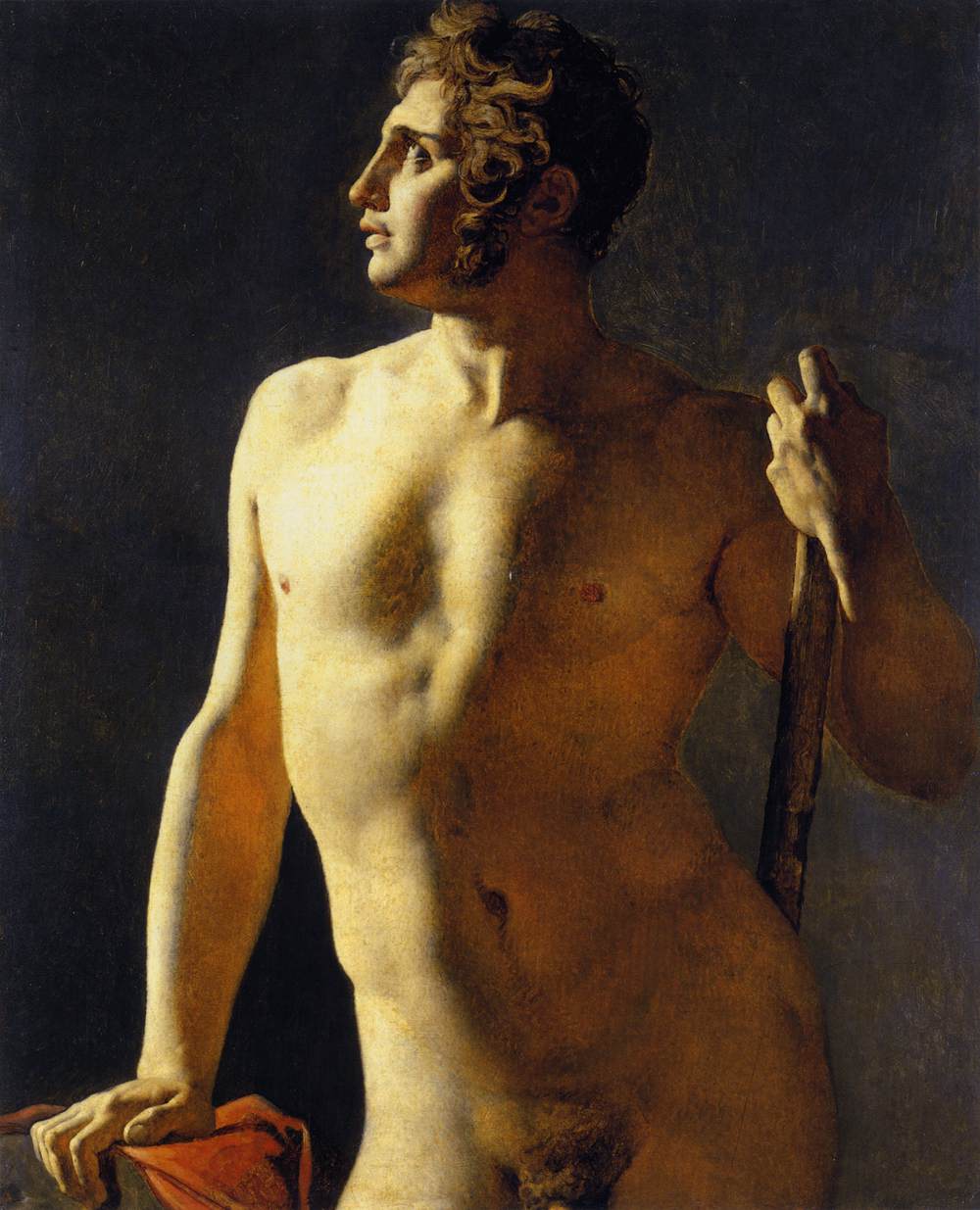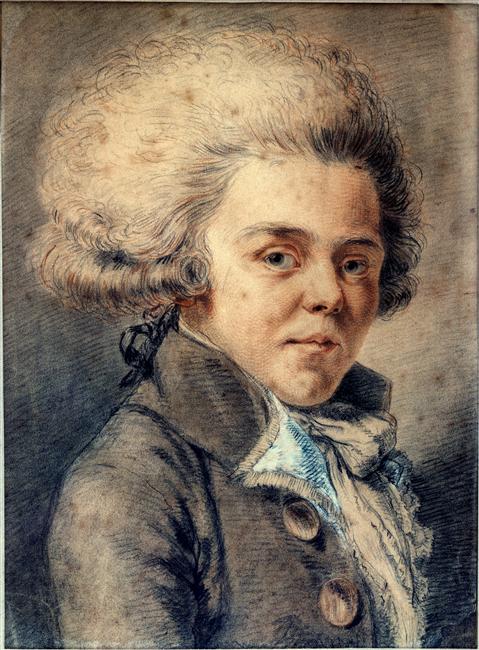|
Napoleon I On His Imperial Throne
''Napoleon I on his Imperial Throne'' () is an 1806 portrait of Napoleon I of France in his coronation costume, painted by the French painter Jean-Auguste-Dominique Ingres. Description The painting shows Napoleon as emperor, in the costume he wore for his coronation, seated on a circular-backed throne with armrests adorned with ivory balls. In his right hand, he holds the scepter of Charlemagne. In his left hand, that of justice. On his head is a golden laurel wreath, similar to one worn by Julius Caesar. He also wears an ermine hood under the great collar of the ''Légion d'honneur'', a gold-embroidered satin tunic and an ermine-lined purple velvet cloak decorated with gold bees. The coronation sword is in its scabbard and held up by a silk scarf. The subject wears white shoes embroidered in gold and resting on a cushion. The carpet under the throne displays an imperial eagle. The signature INGRES P xit is in the bottom left, and ANNO 1806 in the bottom right. History The paint ... [...More Info...] [...Related Items...] OR: [Wikipedia] [Google] [Baidu] |
Jean-Auguste-Dominique Ingres
Jean-Auguste-Dominique Ingres ( ; ; 29 August 1780 – 14 January 1867) was a French Neoclassicism, Neoclassical Painting, painter. Ingres was profoundly influenced by past artistic traditions and aspired to become the guardian of academic orthodoxy against the ascendant Romanticism (art), Romantic style. Although he considered himself a History painting, painter of history in the tradition of Nicolas Poussin and Jacques-Louis David, it is his portraits, both painted and drawn, that are recognized as his greatest legacy. His expressive distortions of form and space made him an important precursor of modern art, influencing Henri Matisse, Pablo Picasso, and other modernists. Born into a modest family in Montauban, he travelled to Paris to study in the studio of Jacques-Louis David, David. In 1802 he made his Paris Salon, Salon debut, and won the for his painting ''The Ambassadors of Agamemnon in the tent of Achilles''. By the time he departed in 1806 for his residency in Ro ... [...More Info...] [...Related Items...] OR: [Wikipedia] [Google] [Baidu] |
Statue Of Zeus At Olympia
The Statue of Zeus at Olympia was a giant seated figure, about tall, made by the Greek sculptor Phidias around 435 BC at the sanctuary of Olympia, Greece, and erected in the Temple of Zeus there. Zeus is the sky and thunder god in ancient Greek religion, who rules as king of the gods on Mount Olympus. The statue was a chryselephantine sculpture of ivory plates and gold panels on a wooden framework. Zeus sat on a painted cedarwood throne ornamented with ebony, ivory, gold, and precious stones. It was one of the Seven Wonders of the Ancient World. The statue was lost and destroyed before the end of the 6th century AD, with conflicting accounts of the date and circumstances. Details of its form are known only from ancient Greek descriptions and representations on coins and art. History The statue of Zeus was commissioned by the Eleans, custodians of the Olympic Games, in the latter half of the fifth century BC for their newly constructed Temple of Zeus. Seeking to out ... [...More Info...] [...Related Items...] OR: [Wikipedia] [Google] [Baidu] |
Raphael
Raffaello Sanzio da Urbino (; March 28 or April 6, 1483April 6, 1520), now generally known in English as Raphael ( , ), was an Italian painter and architect of the High Renaissance. List of paintings by Raphael, His work is admired for its clarity of form, ease of composition, and visual achievement of the Platonism in the Renaissance, Neoplatonic ideal of human grandeur. Together with Leonardo da Vinci and Michelangelo, he forms the traditional trinity of great masters of that period. His father Giovanni Santi was court painter to the ruler of the small but highly cultured city of Urbino. He died when Raphael was eleven, and Raphael seems to have played a role in managing the family workshop from this point. He probably trained in the workshop of Pietro Perugino, and was described as a fully trained "master" by 1500. He worked in or for several cities in north Italy until in 1508 he moved to Rome at the invitation of Pope Julius II, to work on the Apostolic Palace at Vatican ... [...More Info...] [...Related Items...] OR: [Wikipedia] [Google] [Baidu] |
Zodiac
The zodiac is a belt-shaped region of the sky that extends approximately 8° north and south celestial latitude of the ecliptic – the apparent path of the Sun across the celestial sphere over the course of the year. Within this zodiac belt appear the Moon and the brightest planets, along their orbital planes. The zodiac is divided along the ecliptic into 12 equal parts, called " signs", each occupying 30° of celestial longitude. These signs roughly correspond to the astronomical constellations with the following modern names: Aries, Taurus, Gemini, Cancer, Leo, Virgo, Libra, Scorpio, Sagittarius, Capricorn, Aquarius, and Pisces. The signs have been used to determine the time of the year by identifying each sign with the days of the year the Sun is in the respective sign. In Western astrology, and formerly astronomy, the time of each sign is associated with different attributes. The zodiacal system and its angular measurement in 360 sexagesimal degree ... [...More Info...] [...Related Items...] OR: [Wikipedia] [Google] [Baidu] |
Pierre-Jean-Baptiste Chaussard
Pierre-Jean-Baptiste Chaussard (29 January 1766, Paris – 30 September 1823), known as Publicola Chaussard, was a French writer, art critic, poet, revolutionary, politician and follower of Theophilanthropy. According to Michaud in his ''Biographie universelle'', Chaussard was "a writer who would perhaps have failed to make a lasting reputation if he had lived under other circumstances". In 1809 he was elected a correspondent, living abroad, of the Royal Institute of the Netherlands. Family Pierre Chaussard was the son of the architect Jean-Baptiste Chaussard (1729–1818) and of Anne Michelle Chevotet, daughter of the royal architect Jean-Michel Chevotet. He was also the great nephew of Jean Valade, peintre du roi, and close cousin to Agathe de Rambaud and Benoît Mottet de La Fontaine Benoît Mottet de La Fontaine (4 July 1745 – 30 April 1820) was a French officier de plume of the Ministry of the Navy (France), Ministry of the Navy and Colonies and was a colonial a ... [...More Info...] [...Related Items...] OR: [Wikipedia] [Google] [Baidu] |
Gilles-Marie Oppenord
Gilles-Marie Oppenordt (27 July 1672 – 13 March 1742) was a celebrated French designer at the ''Bâtiments du Roi'', the French royal works, and one of the initiators of the Rocaille and Rococo styles, nicknamed "the French Borromini".Gietmann 1911. He specialized in interior architecture and decoration, though he has been connected with the furniture of Charles Cressent. His surname has also been spelled Oppenord and Oppenort. Biography Gilles-Marie Oppenordt was born in Paris. His father Alexandre-Jean Oppenord (1639–1713) was an ''ébéniste'', born Cander-Johan Oppen Oordt at Guelders, one of numerous cabinet-makers from the Low Countries who were drawn to Paris by the opportunity of patronage; the elder Oppenord was naturalized in 1679, when he was a ''menuisier en ebène'' ("furniture-maker in ebony") at the Manufacture Royale des Gobelins; in 1684 the elder Oppenord was appointed an ''ébéniste du Roi'', with official lodgings in the Galeries du Louvre that had be ... [...More Info...] [...Related Items...] OR: [Wikipedia] [Google] [Baidu] |
Francesco Borromini
Francesco Borromini (, ), byname of Francesco Castelli (; 25 September 1599 – 2 August 1667), was an Italian architect born in the modern Switzerland, Swiss canton of Ticino"Francesco Borromini." ''Encyclopædia Britannica.'' Web. 30 Oct. 2010. who, with his contemporaries Gian Lorenzo Bernini and Pietro da Cortona, was a leading figure in the emergence of Roman Baroque architecture. A keen student of the architecture of Michelangelo and the ruins of Antiquity, Borromini developed an inventive and distinctive, if somewhat idiosyncratic, architecture employing manipulations of Classical architectural forms, geometrical rationales in his plans, and symbolic meanings in his buildings. His soft lead drawings are particularly distinctive. He seems to have had a sound understanding of structures that perh ... [...More Info...] [...Related Items...] OR: [Wikipedia] [Google] [Baidu] |
Jan Van Eyck
Jan van Eyck ( ; ; – 9 July 1441) was a Flemish people, Flemish painter active in Bruges who was one of the early innovators of what became known as Early Netherlandish painting, and one of the most significant representatives of Early Northern Renaissance art. According to Vasari and other art historians including Ernst Gombrich, he invented oil painting, Gombrich, The Story of Art, page 240 though most now regard that claim as an oversimplification. The surviving records indicate that he was born around 1380 or 1390, in Maaseik (then Maaseyck, hence his name), Limburg (Belgium), Limburg, which is located in present-day Belgium. He took employment in The Hague around 1422, when he was already a master painter with workshop assistants, and was employed as painter and ''valet de chambre'' to John III, Duke of Bavaria, John III the Pitiless, ruler of the counties of County of Holland, Holland and County of Hainaut, Hainaut. After John's death in 1425, he was later appointed a ... [...More Info...] [...Related Items...] OR: [Wikipedia] [Google] [Baidu] |
Ghent Altarpiece
The ''Ghent Altarpiece'', also called the ''Adoration of the Mystic Lamb'' (), is a very large and complex 15th-century polyptych altarpiece in St Bavo's Cathedral, Ghent, Belgium. It was begun around the mid-1420s and completed by 1432, and it is attributed to the Early Netherlandish painting, Early Netherlandish painters and brothers Hubert van Eyck, Hubert and Jan van Eyck. The altarpiece is a prominent example of the transition from Middle Age to Renaissance art and is considered a masterpiece of European art, identified by some as "the first major oil painting." The panels are organised in two vertical Register (art), registers, each with double sets of foldable wings containing inner and outer panel paintings. The upper register of the inner panels represents the heavenly redemption, and includes the central classical ''Deësis'' arrangement of God (identified either as Jesus, Christ the King or God the Father), flanked by the Blessed Virgin Mary, Virgin Mary and John the ... [...More Info...] [...Related Items...] OR: [Wikipedia] [Google] [Baidu] |








